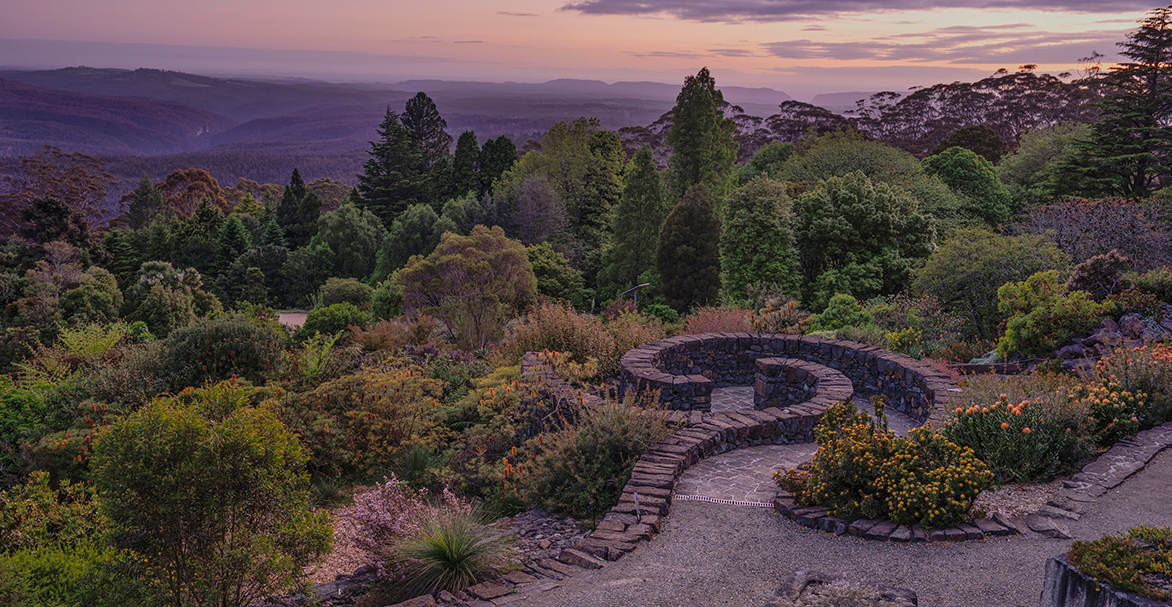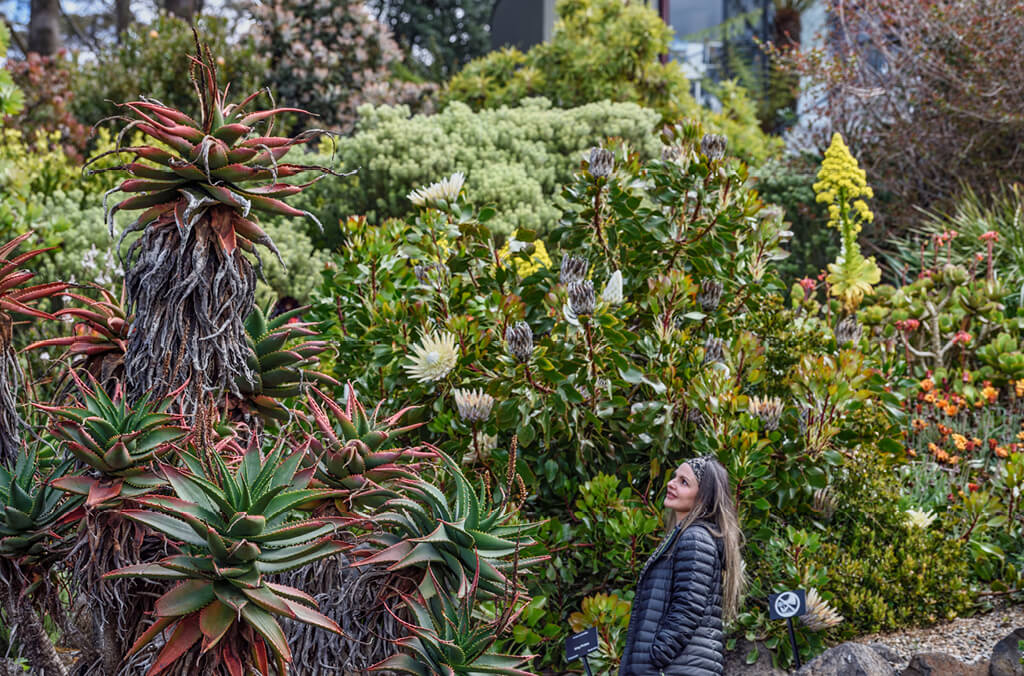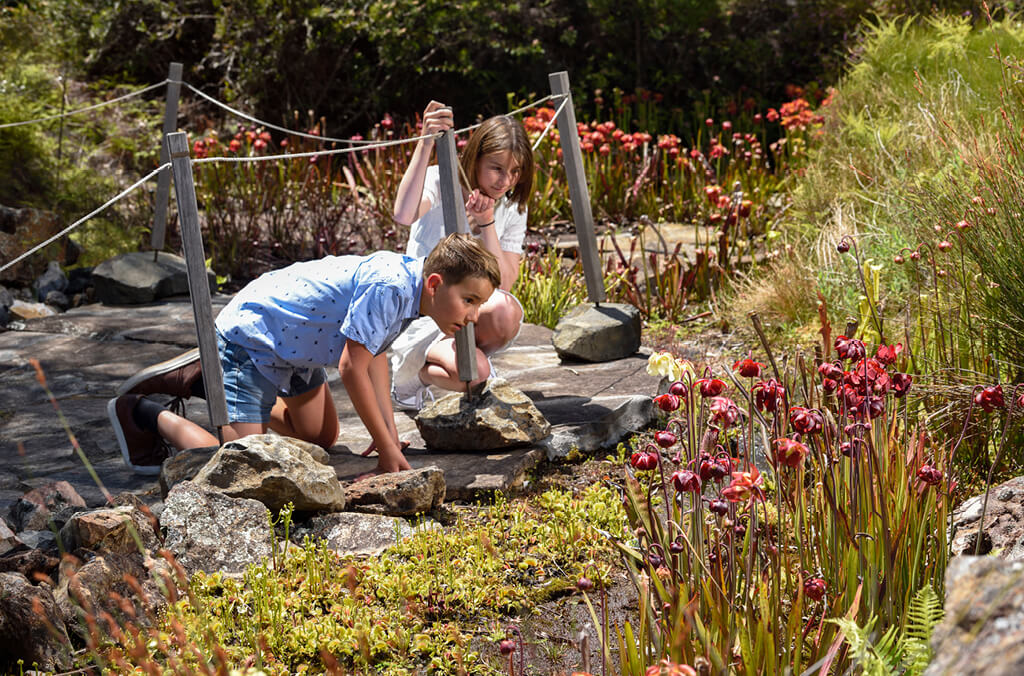The Rock Gardens
Experience the largest Rock Garden in the Southern Hemisphere at the Blue Mountains Botanic Garden Mount Tomah. This popular area boasts a vast collection of southern hemisphere plants, including waratahs, proteas, and puyas, and pools that host an array of aquatic plants and ferns.

Initially admired from the deck of the Visitor Centre, the Rock Garden – the largest of its kind in the Southern Hemisphere – clings to a natural hillside, zigzagged by steps and pathways along stone-walled terraces.
Sculpted from limestone and basalt, this structure showcases depictions of rocky and alpine plant communities found worldwide. It captures the essence of flora from various regions, such as South and North America, Africa, Australia, Eurasia, and New Zealand.
The Rock Garden also has a significant collection of Proteaceae, a family of plants found exclusively in the Southern Hemisphere, featuring Australian waratahs (such as the Telopea speciosissima, the floral emblem of New South Wales), grevilleas, banksias, and South African proteas.
The Proteaceae is a diverse and adaptable species that takes its name from the Greek god Proteus, who could change his form at will, like the 1,600 species in the family that have adapted to thrive in different habitats in the Southern Hemisphere, particularly in Australia and South Africa.
At the base of the Rock Garden, you’ll find one of our most impressive and surprising showstoppers – the South American puyas. Of the 10 species of puya in our Garden, the hero puya species, Puya alpestris subsp. Zeolneri blooms with alien-like turquoise flowers atop two-metre-tall spikes. Hailing from the Patagonian region of Chile, these ‘Sapphire Towers’, can take from 7 to 10 years to bloom and attract a plethora of birdlife such as honeyeaters and spinebills when at their dazzling peak in early summer.

The Rock Garden clings to a natural hillside, zigzagged by steps and pathways.

The watercourse is perfect for giant ferns and moisture-loving herbs to flourish.
The Cascades and the Beach
The Cascades is a system of ponds and pools that begins below the Visitor Centre and flows into a trough with a waterlily collection. Winding around boulders and down a stone watercourse lined with tree ferns, the Cascades feed various water-dependent gardens, including the Bog and a wetland area.
The pools display aquatic plants, and the humid environment along the watercourse is perfect for giant ferns and moisture-loving herbs to flourish. The sound of falling water and the tranquil Beach area at the base of the Cascades makes this garden a popular spot for weddings, with panoramic views of the Blue Mountains National Park.
The Bog Garden
An offshoot of the Cascades creates moist conditions found in alpine hanging swamps, which provides a habitat for delicate bog dwellers, including ferns, mosses, sedges, grasses sand water loving irises.
Children will be fascinated by the Bog Garden’s most curious inhabitants – carnivorous plants, including the Venus Fly Trap and Pitcher Plants. Kneeling pads ensure you can get close to these insect-devouring plants, so take your time to explore and discover.

Children will be fascinated by the Bog Garden’s most curious inhabitants – carnivorous plants, including the Venus Fly Trap and Pitcher Plants.